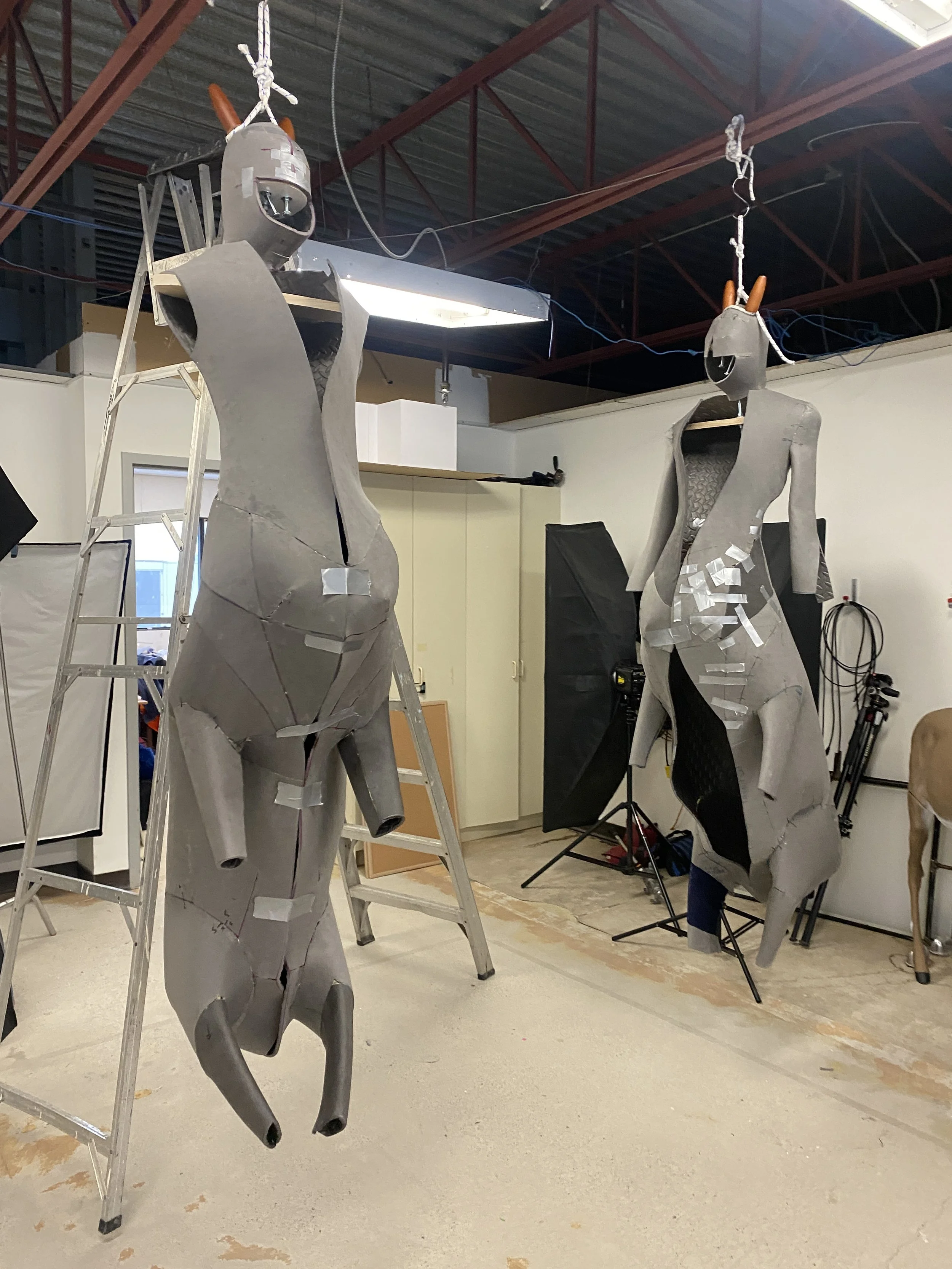Today I hung the cervitaurs for the first time.
Until this morning, they lived on the work benches, in pieces, surrounded by scraps and contact cement. There, they felt provisional and clearly made with EVA foam, tape, glue, and covered in pattern markings cutlines and redrawn seams. They had a distant logic I could think of critically, like theory. I could see all my decisions, mistakes, revisions and negotiations. They read a lot more like constructions rather than bodies.
Read more